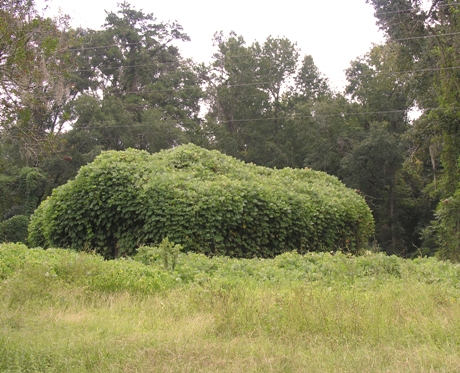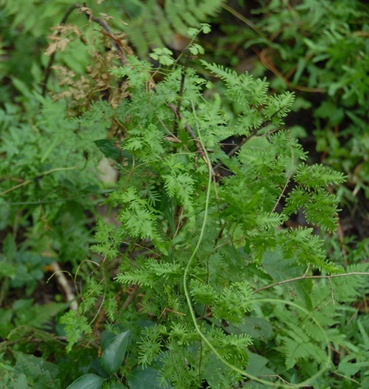Tarzan used them as a superhighway through the trees in every adventure created by Edgar Rice Burroughs. Villains and scoundrels alike fell prey to the ape-man and his horde of avenging simians descending on vines from the trees.
Great fiction, but removed from the reality of present day panhandle Florida. This is especially true about the vines which are impossible to use as a propulsion system and in many cases are exotic invaders.
The most infamous is Kudzu (Pueraria montana), sometimes known as the weed that ate the south. It was introduced into the United States at the Philadelphia Centennial Exposition in 1876.
By 1900 kudzu was available by mail order as inexpensive livestock forage, and later sold by the USDA as an erosion control. The vigorous nature of the plant allowed it easily to escape into the wild.
It now exists in impenetrable tangles as large as 100 acres killing trees, covering structures, and smothering native plants. Kudzu is an aggressive leguminous vine capable of growing one foot per day. It can easily grow 60 feet in a single growing season.
It establishes roots sporadically as it covers an area, layering vines and foliage on top of each other. One key to this plant’s efficiency is its ability to orient each leaf so that the maximum amount of sunlight possible is absorbed. This multi-directional orientation of leaves also poses special problems with sufficiently wetting the top sides of foliage with herbicide.
Special effort is necessary to control kudzu. Older, well established plants are harder to control and completely eradicate. Follow-up spot treatments can require five to ten years in extreme cases. For easiest access, it is best to evaluate kudzu problems in winter when vines and foliage are withered.
Japanese Climbing Fern (Lygodium japonicum) is another aggressive exotic invasive, but not as commonly recognized as Kudzu. It is presently the only non-native invasive fern in the Florida.
Japanese climbing fern is a delicate looking perennial climbing vine. It is capable of forming a dense mat-like thatch capable of covering trees and shrubs. Initially, it was introduced from Japan as an ornamental.
This fern reproduces and spreads readily by wind-blown spores. Animals, equipment, and even people who move through an area with climbing ferns are very likely to pick up spores and move them to other locations.
It is scattered throughout the lower portions of Alabama, Georgia, Louisiana, South Carolina, and much of Florida, including panhandle. Planting or cultivation of this vine for ornamental purposes is prohibited by statute.
Both vines have many negative attributes. Among these are crowding out native vegetation, harboring destructive insects and diseases, and providing a fire bridge to the crown of unlucky trees.
Adequate control of both exotic vines has been achieved with multiple applications of herbicides. As with most invasive plants, repeated and correctly timed treatments are likely to be necessary.
Contact your local UF IFAS Extension office for more information
- Get Your Trees Ready For The Winds of October - October 8, 2019
- Feeding Caterpillars Aren’t Always Cute - August 10, 2018
- Wild Azaleas - May 23, 2018


